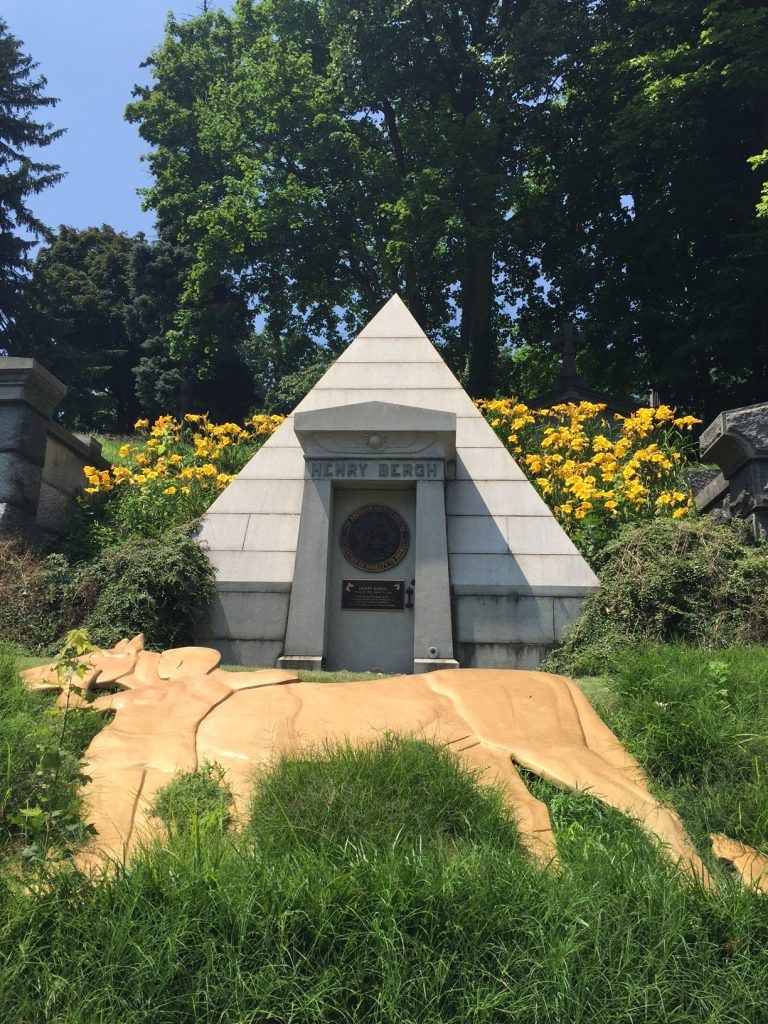
Having only recently finishing reading Atwal Gawande's 'Being Mortal,' a compelling book about modern views on the dying process, I was not altogether surprised that my inner voice suggested a trip out to Green-Wood Cemetery this past weekend. In truth, Green-Wood was described online as more of a public park than a repository for our dearly departed.
'I don't like that word 'park.' This is a CEMETARY!' insisted one of the caretakers when I let the 'p' word slip shortly after my arrival. 'There is no respect if you call it a 'park.'
Whatever the nomenclature, Green-Wood is a veritable modern day pharaonic City of the Dead. The monolithic gates which usher you in are as grand in design as they are difficult to pin down in style; they have that neo-Gothic-Swiss chalet meets-Gaudi-on-absinthe thing going on. And clearly, the stonemasons of the 19th century were a very busy bunch, conjuring up hundreds of mausoleums as differentiated in style as the homes lining a modern day Hollywood residential block.
Green-Wood was THE place to be buried at one time; you could have lived out your life in a lovely brownstone in Brooklyn Heights, shopped at Alexander Stewart's 'haggle-free' Marble Dry Goods Iron Palace in Manhattan or at Wanamaker's with it's revolutionary 'satisfaction guaranteed' policy, eaten out at Delmonico's, all the while knowing that you would reside ultimately in fashionable Green-Wood, all done without missing a single beat of the 1800's version of 'the good life.'

As I tour the grounds, I confess I paused to curse the gravesite of Pierre Lorillard who reputedly introduced the tuxedo to America. The tuxedo?? I would have much preferred the reintroduction of the toga. I also visit the family plot belonging to the Charles Feltman family. Surely you've heard of Charlie Feltman? The first person to put a hot dog on a bun? The Feltman mausoleum is particularly grand. And the plot of land it occupies must have once had a magnificent outlook over farms and forests. Now, the Feltman temple looks out on a busy Brooklyn interchange so much for 'eternal rest.'

Green-Wood provides an endless panorama of funereal art at its finest, created from an abundance of marble, granite and onyx. There is a gorgeously detailed, bigger-than-life bronze statue of a mourning woman draped dramatically up a set of wide steps; endless urns detailed in sad-eyed cherubs; crosses ranging from Celtic simplicity to Baroque complexity. I learn from my guide that there is a plangent symbolism in the architecture of the dead; high obelisks indicate long lives; a pillar sheared off short of its capital, a life cut short unexpectedly. Egyptian motifs abound suggesting a number of 19th century American Masons spending their eternity in Green-Wood, perhaps listening to some heavenly recording of Mozart's Masonic- themed THE MAGIC FLUTE.
I wonder if the cemetery caretaker insisted on the need for us to 'respect' the dead simply because they have already braved what we, the currently living, will one day necessarily brave. Funny, though. We barely respect one another when we are alive. Yet, we all share the two most unimaginably powerful moments life offers. Surely we can find other ways somehere in the middle to connect meaningfully with each other, perhaps discovering along the way that 'respect' doesn't only need a gravestone to mark its existence.


.png;w=120;h=80;mode=crop)
